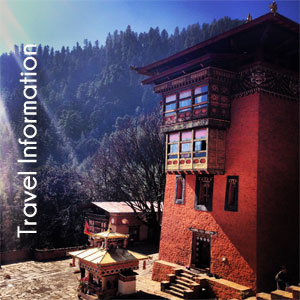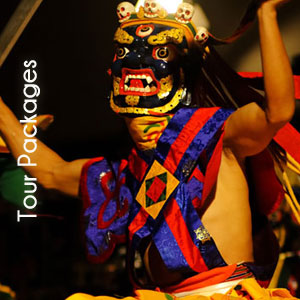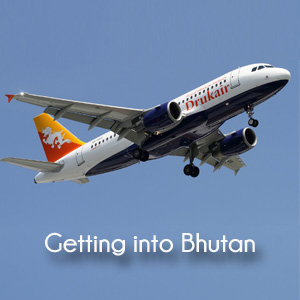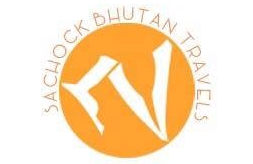It is the most historic Dzongkhag if the number of ancient temples and sacred sites are counted. The region consists of the four mountain valleys of Ura Chumey, Tang and Choekhor. The farms in Bumthang yields buckwheat, dairy products, honey, apples, potato, rice and woolen products and many other products. Most of the Bumthang is part of Bhutan’s extensive protected areas network. The northern two- thirds of the district belong to Wangchuk Centinieal Park, buffered by pockets of biological corridors. Southern Bumthang is part of another protected area, Thrimshingla National Park. The scenic valley and important population of black-necked cranes migrating in winter draws huge number of tourists each year.
Jakar Dzong:
Also known as Jakar Yugyal Dzong, constructed in 1549, by the Tibetan Lam Nagi Wangchukit(1517-1554). It is located on the ridge above Jakar town in the chamkhar valley of Bumthang. Jakar Dzong could be the largest Dzong in Bhutan, with a circumference of more than 1,500 meters (4900 ft). The Dzong played an important role as the fortress of defense o fthe whole eastern Dzongkhags.
Jambey Lhakang: This monastery was built in the 7th century by the Tibetan King, Songtshen Gempo. It is one of the 108 monasteries which he built to subdue evil spirits in the Himalayan region. Its present architectural appearance dates back from the early 20th century.
Kurji Lhakang:
This is the final resting place of the remains of the first three kings of Bhutan. The Lhakang comprises of three temples. The one on the right was built in 1652 against the rock face where Guru Padmasambawa meditated in the 8th century. The middle temple is built on the site of a cave containing a rock with the inprint of the Guru’s body, and is therefore considered to be the most holy. The Temple on the left was built in the 1990’s by HM Ashi Kesang Wangmo Wangchuck, Grand-Queen Mother. Thses three temples are surrounded by a 108 chorten wall.
Thrimshing Lhakang:
The temple was built by the remarkable saint Pema Lingpa in 1501. It is now seat of Lam Sungthruel Rinpochhe the current speech incarnation of Pema Lingpa. The Monastery supports a body of over 95 monks. In March 2012 the monastery was submitted for inscription on the UNESCO world heritage list, it currently resides on tentative list.
Thangbi Goenba:
A walk about 30 minutes north of Kurji Lhakang leads one to this monastery, situated in the middle of a wide fertile plateau overlooking river. Founded in 1470 by Shamar Rinpochhe of the Karma Kagyupa religious school, the building comprises two sanctuaries and a temple of terrifying deities. The sanctuary on the ground floor contains statues of the past , present and future Buddha’s and three clay statues probably dating to the end of the 15th century. On the upper floor, the vestibule contains two remarkable paintings of Guru Rinpochhe’s heaven, and the Buddha Amitabha’s heaven.
Ngang Lhakang:
The Lhakang is located in the Choekhar valley which was the residence of the Choekhor Penlop who was ruling the valley before the Drukpa conquest in the 17th century. Also known as the “swan temple” was built in the 16th century by Tibetan Lam named Namkha Samdrup, who also built Namkha Lhakang in the Tang valley.
Ura Valley:
The road that climbs through amazingly open countryside, only occasionally running into forest, 48 KM from Jakar, passing the Ura-La Pass (3,600m), on the approach to which there is a magnificent view of Mt. Gangkhar Puensum. Villages in Ura have clustered houses, which is quite unusual in Bhutan.
Tang Member Tsho:
Considered one of the most sacred sites in the in the region as it relates to the renowned treasure reveler is located along the way to the Tang Village over the feeder road, a thirty minutes drive to the Member Tsho from Chamkhar town. In the 15th century reincarnated disciple of Padmasambawa Terton Pema Lingpa who discovered treasure from the lake. It is believed that the Lam had a vision about hidden treasure to be found at the foot of the Tang valley which was indicated by Guru Rinpochhe many centuries before. For having people of the Tang believed in it, he held a butter lamb in his hand, jumped into the lake, Remained under water for a long time, and he re-emerged holding a chest and a scroll of paper in his hand and the butter lamb held in his hand still burning bright. There after the lake came to be known as the Member tsho(the burning lake). Being an important site for historians and because of its spectacular beauty, the place has become sacred pilgrimage where people comes with bright multicolor flags surrounding the place and offering butter lambs on the lake.

Bhutan Travel Info
Bhutan Travel tips, Daily Tourist Tariff, Bhutan Visa Information, Tour payment regarding your tour booking to Bhutan. Click on the link below to know more.
Learn more >>

Tour Packages
Travel to Bhutan with Sachock Bhutan Travels. We, at Sachock offers Cultural tours, Trekking Tours including the World's toughest Trek Snowmen Trek and colorful Festival tours of Bhutan.
Learn more >>

Getting into Bhutan
Travelling to Bhutan can be accessible by Air, to Paro(the only international airport in Bhutan connecting with Indian Cities, Nepal, Bangaldesh, Thailand & Singapore) & Road through Southern border towns of Phuentsholing, Gelephug and Samdrup Jongkhar.
Learn more >>

Sachock Bhutan Travels, P.O Box No: 1304, Karma Khangzang, Thimphu : Bhutan
Phone # (+975) 77177717 / 77210443 : Tele-Fax (+975) 2 333 881
Email: [email protected] / www.SachockBhutanTravels.com
Sachock Bhutan Travels, Copyright © 2025. All Rights Reserved.






